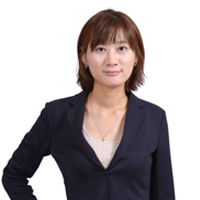[From the Scene] Hanwha automation boosts solar efficiency
By Shin Ji-hyePublished : Oct. 16, 2019 - 17:28
JINCHEON, North Chungcheong Province -- At Hanwha Q Cells’ factory in Jincheon, North Chungcheong Province, there are hardly any workers. The five assembly lines -- 330 meters wide and 100 meters long -- are run by eight workers each.
The high-quality solar cell and module manufacturer claims it is one of the most automated factories in the global industry.
The high-quality solar cell and module manufacturer claims it is one of the most automated factories in the global industry.

“Automation is important. When an employee touches cells or modules, fingerprints or microcracks can be left on the products. This may lower the cell output. There should be fewer people in the plant,” said Lee Byung-cheon, general manager of Q Cells’ Jincheon plant.
There are around 2,000 workers at the plant, which produces 2.2 million cells per day with annual production capacity of 4.3 gigawatts. This amount of electricity is enough for more than 6 million people to use for a year.
The facility is automated -- from the warehousing of wafers, which is the raw material for solar cells, to the shipment of modules. It has a system focused on real-time monitoring of the plant’s environment, control, logistics, work breakdown tracking management, grasping of the current state, and management of defects.

The company adopted wearable devices at the plant last year, to monitor and track operations and catch errors. Last year, it adopted 150 units as a pilot operation, and this year it has 250 units.
“The average age at the plant here is 27 years. Most of them are tech savvy and easily adopt the digital system,” Lee said.
“Since Hanwha acquired Germany’s Q-Cells in 2012, its solar business unit has realized the potential of automation,” Lee said.
The acquisition of Q-Cells also led to major changes at Hanwha’s Qidong plant in China, which it acquired in 2010. The plant had around 10,000 workers to produce 500 megawatts of cells and 800 megawatts of modules, mostly done by hand. Now, there are around 4,000 workers to produce 2.6 gigawatts of cells and modules, respectively.
“The main goal of our Jincheon plant’s smart factory is to improve the process and equipment system to optimize labor, minimize opportunity cost, and realize production efficiency. We will continue to develop and realize a more sophisticated smart factory with the use of big data and automation to supply the best products to our clients,” said Ryu Seong-joo, head of Hanwha Q Cells’ plants in Korea.
Hanwha Q Cells achieved top market share in the first and second quarters of 2019, and its residential market share in the US has exceeded 27 percent in 2019. The global solar market is expected to grow rapidly from 1 percent to 15 percent of total power generation between 2015 and 2040.
By Shin Ji-hye (shinjh@heraldcorp.com)


















